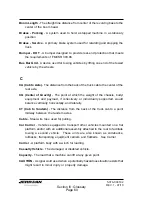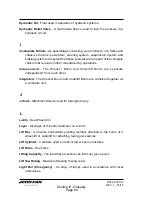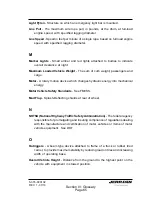
Section III: Maintenance
Page 52
5-376-000102
REV. 1 - 07/10
It is good practice , where the equipment is consistently in use, to give the
rope a certain length of service, several hundred hours, several weeks or
months and then renew the rope regardless of it's condition. This method
eliminates the risk of fatigue causing rope failure.
Any deterioration, resulting in a suspected loss of original rope strength,
should be carefully examined and a determination made as to whether further
use of the wire rope would constitute a safety hazard.
There are certain points along any given rope which should be given more
attention than others, since some areas will be subjected to greater stresses,
forces, and hazards. Some of these areas include at the winch drum, at the
boom sheaves and at the end attachments.
All products are subject to age, wear and deterioration, all of which cause a
reduction in the products breaking strength capacity.
Probably the most common sign of rope deterioration and approaching failure
is broken wires. Inspection criteria are specific as to the number of broken
wires allowable under various circumstances. It is important that a diligent
search be made for broken wires, particularly in critical areas. Inspection of
wire rope ends should include hooks and thimbles.
Any wire ropes that have been abraded, crushed, kinked or twisted should
be replaced.
Wire rope should be routinely cleaned of any and all debris. Grit and gravel
can quickly reduce a wire ropes life. A wire rope should be well lubricated
so that it can act and perform as it was designed. Lubrication keeps a wire
rope flexible and free from rust.
Consult the manufacturer or your local distributor for the proper replacement
wire rope.





































